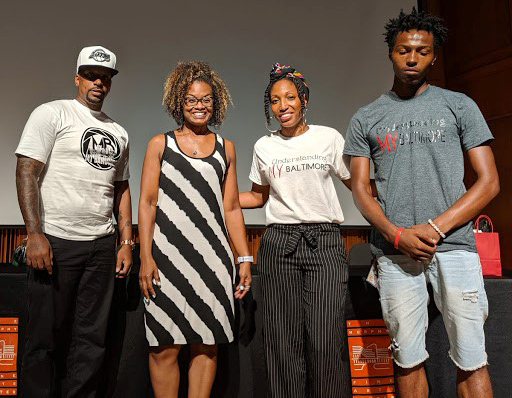
Neumann alumna produces unique film
My Baltimore is a 54-minute film which gives teenagers in the city a platform to speak about the experiences that interfere with their academic success and healthy family relationships. It is the brainchild of Shannon Singletary, a 2010 Neumann University alumna, and Coach Donovan Adams. Both are educators in Baltimore City schools.
Singletary describes the film as a series of interviews with four students, 15-17 years old, and their parents. The youngsters, all students at Bluford Drew Jemison STEM Academy, also engage in role playing with their parents and participate in what Singletary describes as a “restorative circle,” a discussion to analyze a specific action and assist those involved in understanding the effect of the behavior on all concerned.
Students identify fatherlessness, grieving from gun violence, neglect, and domestic violence as their adverse childhood experiences. According to Singletary, “These traumas serve as barriers to their success in school as well as building family relationships; however, talking about their traumas serves as a healing process where students become self-aware of triggers and learn coping skills to manage them.”
The film was funded by a Title I grant which permits the state to award federal money to local school districts to improve academic performance and parent involvement. An English and Secondary Education major at Neumann, Singletary wrote the grant proposal and served as executive officer for the production of the film. Adams was executive director.
“We began the project on March 20,” she explains, “and finished in two months. We met two times each week and recorded 16 hours of footage.”
The trailer for the film highlights its unusual approach to the interviews, using extreme close-ups of the students. Often, the screen is filled with only a section of each youngster’s face, creating a proximity that can feel unnerving.
“It’s so raw,” Singletary admits. “That’s one of the reasons we always have a Q&A after the film.”
The public debut of My Baltimore was on July 17 at Morgan State University’s fine arts center. Singletary will consider the project a success if it generates resources for students in Baltimore, results in some policy changes, and becomes self-sustaining.
“This is absolutely the beginning. We need to do another one,” she said.
 CHALLENGE
CHALLENGE






